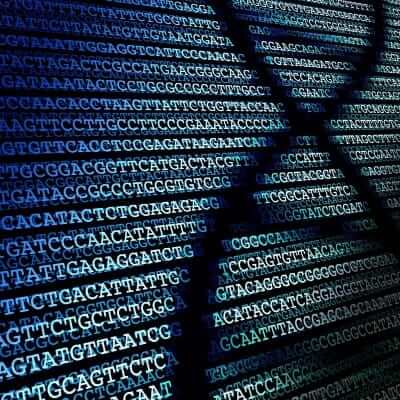How Can Bioinformatics Help? Oncology, Single-Cell & Microbiome
- 3rd November 2020
- Posted by: Claudine Gabriele
- Categories: Articles, Bioinformatics, Biomarkers, Gene Expression Analysis, Microbiome, Single Cell Analysis

What area does your research focus on? From using single-cell sequencing to assessing the microbiome or identifying novel therapeutics for oncology, we take you through three different focus areas that bioinformatics can help with.
Single-Cell Analysis
Single-cell analysis is a fast-growing area of research – and one where bioinformatics can assist in getting the most out of your research. Single-cell sequencing allows the many different cell types within a sample to each be analysed on an individual level. It can be used for all types of ‘omics data and allows for both high- and low-throughput screening methods.
Fios Genomics’ bioinformatic capabilities have often been used in studies to identify the presence of cell sub-populations in treatment groups and characterise the difference between those groups through their gene expression profiles.
Whitepaper on Single-Cell Analysis: Applications and Resolutions for Research
Our brand-new whitepaper ‘Single-Cell Analysis: Applications and Resolutions for Research’ is now available for download exclusively through our website.
It walks through some of the research applications for single-cell data use as well as the challenges that it can face, such as low sequencing coverage, libraries that represent doublets, and batch effects between separately generated data sets.
Walk through a single-cell data analysis report
‘Using single-cell RNA-seq to define immune cell subsets and their gene expression signatures in healthy donor PBMCs’
Our team has created a data analysis sample report using single-cell RNA-seq.
In this report, we assessed the association of gene expression and functional pathways with the immune cell subtypes in peripheral blood mononuclear cells (PBMCs).
The main objectives of our analysis were to:
- Identify cell clusters in the data and annotate these by immune cell type using established biomarkers
- Identify differentially expressed genes (DEGs) between cell populations
- Identify functional pathways that are significantly enriched in DEGs between clusters
Explore the cluster identification, differential expression, and functional analysis we conducted in our data analysis report here.
Microbiome Analysis
Microbiome research is another increasingly popular area for bioinformatic analysis and support. Whether a study looks into the skin microbiome or the gut microbiome, bioinformatics can help in getting the most out of data.
Fios Genomics participated in the MAARS (Microbes in Allergy and Autoimmunity Related to the Skin) FP7 project, with a paper recently published from the joint work, ‘Microbe-host interplay in atopic dermatitis and psoriasis’. The MAARS project aimed to study the skin microbiome in detail using two skin disorders. It investigated how environmental and genetic factors could initiate inflammatory events, as well as how the dysregulation of both innate and adaptive immune response could lead to inappropriate responses leading to clinical symptoms of these skin disorders.
Whole microbiome and transcriptomic analyses were conducted to unravel the pathways during host-pathogen interactions. From this work, key microbes were identified to help develop intervention strategies to decrease prevalence. Read the paper here.
Whitepaper on Microbiome: Challenges and Resolutions for Research
Our whitepaper ‘An Introduction to the Microbiome: Challenges and Resolutions for Research’ is available for download exclusively through our website.
It dives into some of the main challenges for microbiome research including:
- making credible sense of data generated
- deciding between different sequencing methods available
- other longstanding issues that arise when working with microorganisms
We interviewed Dr Paul McAdam, Head of Next Generation Sequencing, to find out more about the microbiome and upcoming research in the area.
Walk through a microbiome data analysis report
‘The role of gut microbiota in the pathogenesis of Celiac Disease’
In this report created by our team, the aim was to compare the microbiomes of celiac disease patients to those of first-degree relatives of celiac patients and healthy controls. Samples analysed were taken from duodenal biopsies (disease site) and stool samples (to represent the whole gut microbiome). Differences between groups and sample origin (biopsy and stool) were evaluated at both the individual species level and at the ecosystem level.
Explore the functional profiling and differential abundance analysis we conducted in our data analysis report here.
Oncology Analysis
Oncology is the largest area of analysis at Fios Genomics. For the last few years, over 30% of our bioinformatics analyses have focused on different areas of cancer research. Our publications and papers highlight some of the diversity of oncology-related projects that we have worked on.
We analyse data at all stages on the drug development pipeline. In preclinical models, we have published work covering small-cell and non-small cell lung cancers, as well as prostate cancer. Our clinical research analyses cover as varied an area as our preclinical offerings. We have worked on various cancers including metastatic urothelial, prostate, and breast cancers including primary and triple-negative.
Walk through our PD-L1 example report
This report is based on a collaboration, published in Nature, investigating response to PD-L1 blockade therapies in patients with metastatic urothelial cancers (Mariathasan et al., 2018).
Our data analysis report ‘Immunological phenotype, response to therapy and survival’ presents a section of the published analysis from the paper, concerning overall survival and response to treatment. It highlights the ability of high-throughput approaches to define biomarkers which accurately predict both treatment response to anti-PD-L1 therapy and overall survival in patients with metastatic urothelial cancer.
Request this data analysis report here.
Leave a Reply
You must be logged in to post a comment.

